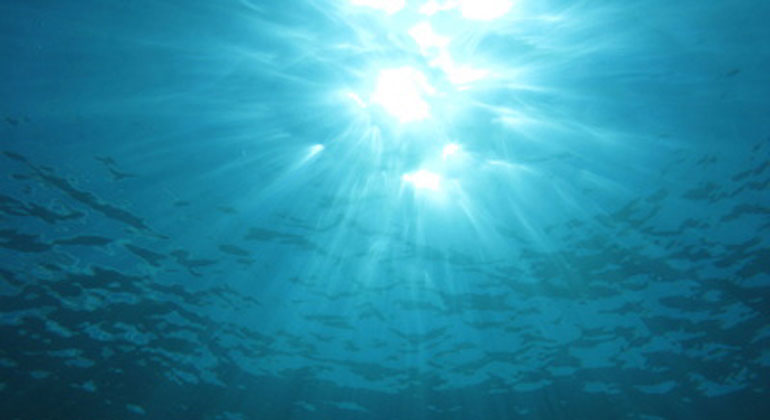The gate between the deep ocean and the atmosphere is becoming more impermeable
Nature study shows increasing thickness of the ocean surface mixed layer. The upper oceanic stratification is increasing due to global warming.
This was expected and is no surprise. However, an international team of researchers with participation of GEOMAR Helmholtz Centre for Ocean Research Kiel has published today in the journal Nature a study showing that over the past 50 years the density difference between the uppermost and the next deeper layer of the ocean has increased significantly more than previously assumed. In addition, the uppermost ocean layer (surface mixed layer), which separates the deep sea from the atmosphere like a filter, has become thicker. Among other things, this increasingly hinders ventilation of and exchange with the deeper ocean.
The earth is warming. The warming of the atmosphere would be even more pronounced if the ocean did not function as a gigantic climate buffer. The oceans have absorbed more than 90 percent of the additional heat energy that has accumulated in the atmosphere over the past 150 years due to the release of greenhouse gases. Furthermore, plankton organisms in the ocean bind enormous amounts of carbon and produce oxygen in the process. For all these processes, the uppermost, well-mixed layer plays the decisive role, since only this layer is in direct contact with the atmosphere, functioning as gate between atmosphere and ocean.

A study published today in the international journal Nature shows that this surface mixed layer of the ocean is becoming significantly more impermeable and also thicker. “This has consequences for the ocean itself, as the deeper water layers become less well ventilated. This also means that the world ocean’s function as a climate buffer is weakening,” says oceanographer Dr. Sunke Schmidtko from GEOMAR Helmholtz Centre for Ocean Research Kiel, one of the authors of the study.
For the study, scientists from France, Australia, Germany, Great Britain and the United States led by first author Jean-Baptiste Sallée of Sorbonne Université Paris looked at all available oceanographic data from 1970 to 2018. “These data were collected during ship expeditions, for example with CTD probes, and measured by autonomous measuring buoys, the ARGO floats,” explains Dr. Schmidtko. Databases such as the World Ocean Database of the U.S. National Oceanic and Atmospheric Administration (NOAA) or the European Coriolis database keep them available for science and free public use.
Analysis of this large amount of data showed that the density difference between the upper mixed layer of the ocean and the layer below has increased by almost nine percent in some regions during the summer months since 1970. “In the tropical and subtropical areas, this is mainly due to the warming of the surface waters, while in the temperate and polar latitudes it is due to the influx of fresh water, which shielding deeper salt water from the surface,” Dr. Schmidtko explaines. These results had been expected, but not with such clarity.
Even more surprising is the fact that the upper mixed layer got thicker over the time period analyzed. “While previous work suggested that a thinner mixed surface would be associated with a more stratified ocean, we find instead that the summer mixed layer increased in thickness by several meters per decade,” the Kiel oceanographer says. It is likely that this deepening of the surface layer is also related to climate change induced stronger winds that mix the upper water layers intensely. “However, further studies need to follow up on this point,” Dr. Schmidtko emphasizes.
Nonetheless, the study clearly shows the changes taking place in the upper ocean. “The upper mixed layer is a gate between the atmosphere and the deep ocean. Oxygen for the deep has to pass through this layer in the same way as nutrients from the deep come through this layer to organisms to feed on near the water surface or even heat from the atmosphere. When this gate is thickening and becoming more impermeable, it affects all the processes that rely on this exchange layer. The oxygen depletion in the entire ocean, which we have been studying from Kiel for years, is also intensified by these processes,” summarizes Dr. Schmidtko.
- Reference: Sallée J.B., V.Pellichero, C. Akhoudas, E. Pauthenet, L. Vignes, S. Schmidtko, A. Naveira Garabato, P. Sutherland, M. Kuusela (2021): Summertime increases in upper ocean stratification and mixed layer depth. Nature, 24, https://dx.doi.org/10.1038/s41586-021-03303-x








